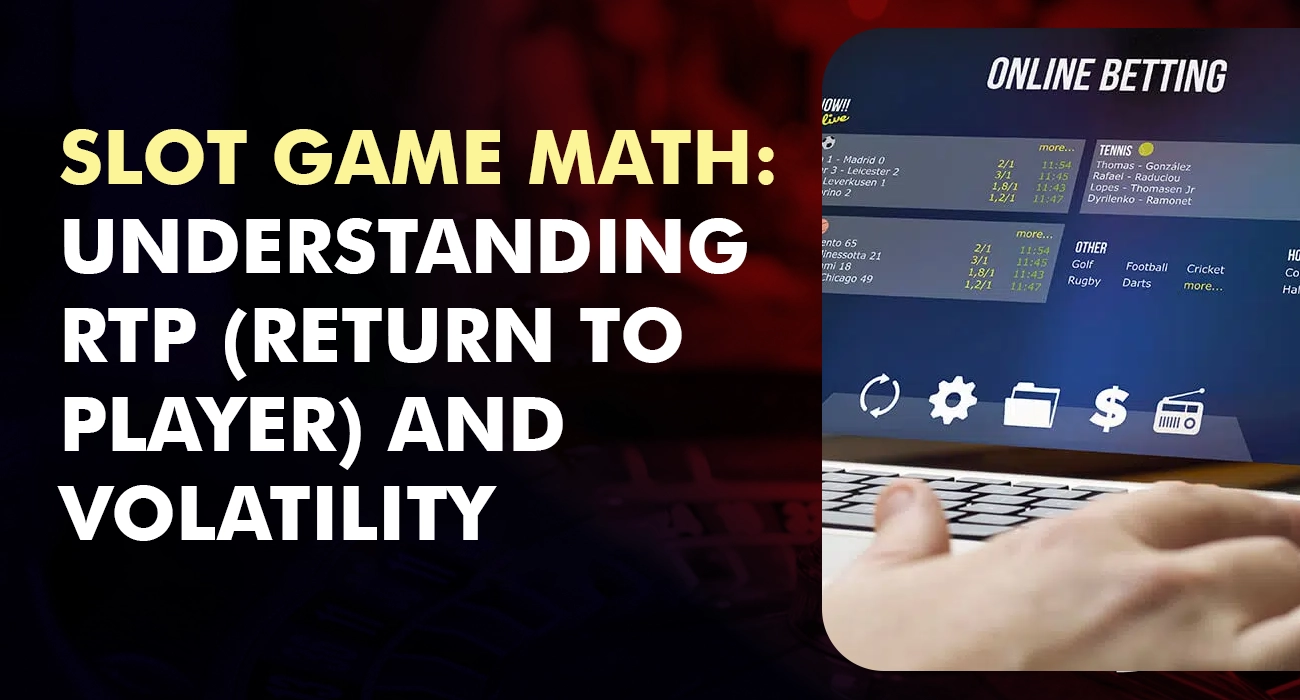Slot Game Math: Understanding RTP (Return to Player) and Volatility
Return to Player (RTP) and volatility are two key ideas that control player experience and result in the world of online slots. Comprehending these components is essential for both novice and experienced gamblers. Two important metrics that reveal a slot game’s potential profitability and danger are return on investment (RTP) and volatility. We explore the complexities of slot game mathematics in this investigation, elucidating the meaning of volatility and RTP.
RTP, or Return to Player:
The idea of Return to Player (RTP) is fundamental to the mathematics of slot machines. The proportion of bet money that a slot machine is designed to return to players over time is known as the RTP. It gives information on a specific slot game’s long-term profitability and is expressed as a percentage. For example, a 96% RTP slot machine implies that players would typically get paid $96 for every $100 wagered. It is crucial to remember that RTP is merely a theoretical idea and cannot ensure specific outcomes. Nevertheless, the actual payout tends to approach the RTP over a significant number of spins.
Players view high RTP values—typically greater than 95%—as advantageous since they denote a smaller house edge. A more minor house edge indicates better chances for the gambler. The house edge is the casino’s advantage over players. To maximize the possible return on investment, it is imperative to take RTP into account while choosing a slot machine game.
Change in Volatility:
When evaluating a slot game’s features, volatility—also referred to as variance or risk level—complements RTP. The degree of risk connected to a specific slot machine, which affects the frequency and magnitude of payouts, is referred to as volatility. Volatility comes in two primary flavors: low and extreme.
Low Volatility: Slot machines with low volatility tend to pay out more often but at a lesser percentage. Even if the payouts are occasionally small, these games are perfect for gamers who want a consistent flow of winnings. Slot machines with low volatility are suitable for players who wish to lengthen their playtime and keep their bankroll steadier.
High Volatility: On the other hand, high volatility slots have sporadic yet substantial payouts. Even though there may be longer stretches without a hit in these games, players who are looking for the rush of a big win find them appealing. Higher bankroll requirements and a willingness to endure losing streaks in the hope of hitting a big jackpot apply to high-volatility slots.
RTP and Volatility Balancing:
Players need to understand how RTP and volatility interact to customize a strategy that fits their risk tolerance and preferences. The style and intensity of the gaming experience are determined by volatility, while a high RTP increases the likelihood of long-term profitability. Best Slot Machine App Online with low volatility and a respectable RTP can be the best choice for players seeking a long and relaxing gaming experience. High volatility slots, on the other hand, may appeal to risk-takers seeking potentially enormous payouts in exchange for fewer but more significant wins.
Making wise selections in the complex realm of online slot games requires an understanding of the mathematics underlying volatility and RTP. RTP guides long-term profitability, but volatility gives a slot’s risk-reward profile more depth. Achieving the ideal ratio between return on investment and volatility enables players to customize their gaming experience to suit their tastes.
Understanding these basic ideas gives you the ability to make sense of the enormous array of online slot machines, regardless of your preference for the thrills of high-risk, high-reward slots or the consistent flow of low-volatility games. Equipped with this knowledge, players may make decisions that are in line with their objectives. At the same time, the virtual reels spin, increasing both the fun and possibility of success from their slot machine gaming activities.
Also read: Mobile Casino App vs. Desktop Pros and Cons (khelraja.live)






